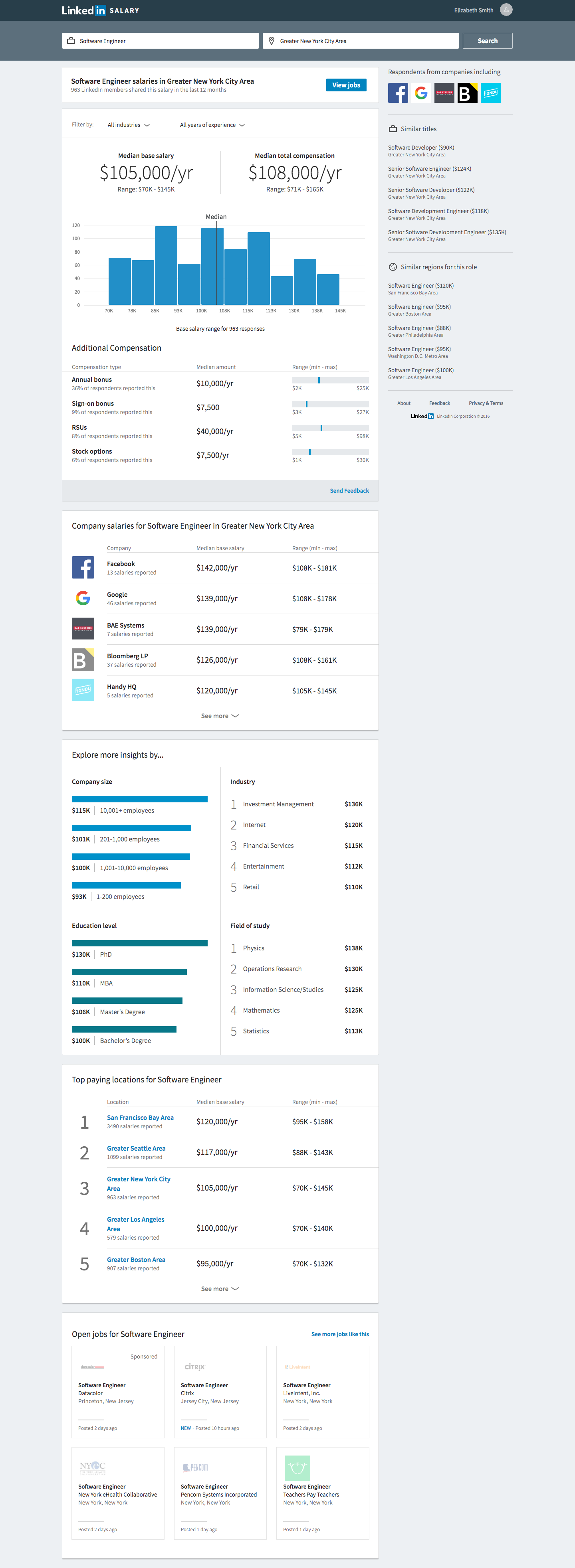New LinkedIn Product Changes the Rules of the Salary Game

LinkedIn is aiming to change all that with LinkedIn Salary, a new tool that puts recruiters, hiring managers, and job applicants on equal footing.
For Job Seekers
When on the hunt for a job, it’s important to know as much as possible about the companies one applies to. LinkedIn Salary helps applicants set realistic compensation expectations in advance of an interview or job offer, instead of going in blind.
“Candidates can use LinkedIn Salary to better understand what their experience and background are worth in the job market,” explains Ryan Sandler, senior product manager at LinkedIn. “That way, they can enter the process much more informed about their own earning potential. They can also use LinkedIn Salary to compare salaries at top companies they’re interested in and see how location and company size factor in, or how things change with different levels of educational achievement. And finally, when an opportunity arises, LinkedIn Salary can help candidates weigh job offers and make better career decisions.”
The tool isn’t just useful for entry-level job seekers, either. Those who are considering leaving their current position can see where they stand in the job market and whether or not a move would be a good idea, financially speaking.
“LinkedIn Salary helps people who are already employed understand their earning potential and take steps to reach it,” Sandler says. “They can see how their current compensation measures up to their peers and how making changes – like changing industries or relocating – could impact their salary and, ultimately, their career.”
The most important thing for those on the job hunt is to stay informed. In order to get the best offer, applicants must have the right information at their fingertips. Going in unprepared can have a number of consequences, including a salary offer that’s far lower than what it could have been.
For Recruiters
LinkedIn salary has value on the other side of the table as well. Recruiters can use the tool to make sure they aren’t unintentionally lowballing candidates.
“LinkedIn Salary helps everyone operate from the same playbook,” says Sandler. “Recruiters can also use the information to better understand what various types of candidates earn and how factors like experience, education, location, or company size come into play. They can then develop a realistic picture of what a given candidate is worth in the market so they’re better prepared for the negotiation process.”
To attract the best of the best, it’s crucial that companies not be out of touch with what their competitors are offering in terms of salary.
“LinkedIn Salary also can help hiring managers develop more competitive pay structures so they’re not missing out on top talent,” Sandler says. “Or, when higher pay isn’t an option, well-informed recruiters will be ready to point out the value their company brings, like excellent benefits, an entrepreneurial culture, or an opportunity to work on high-impact projects.”
Like job hunters, recruiters must have all the best information available to be successful. Tools like LinkedIn Salary can help to even the playing field between recruiters and candidates. When both sides start with similar terms and expectations, the process is easier for all involved.


